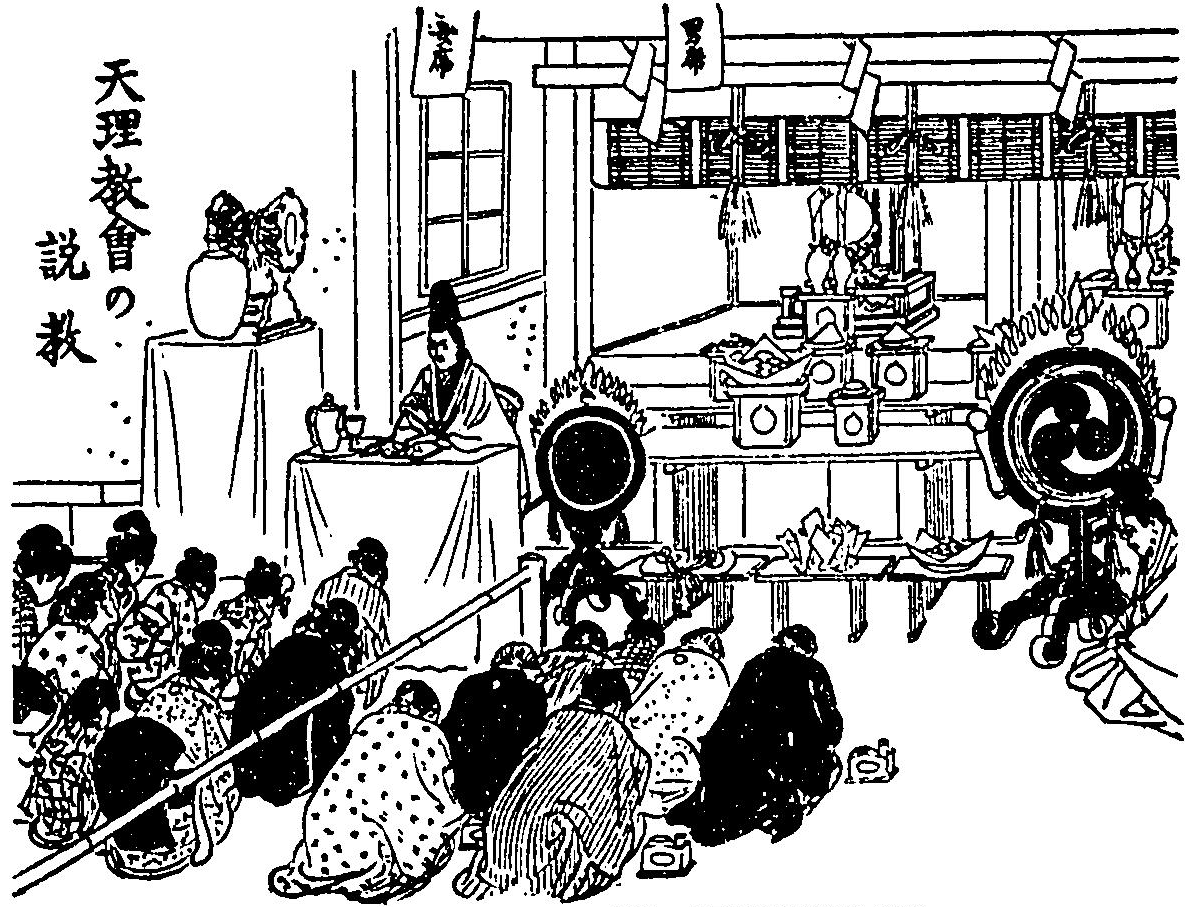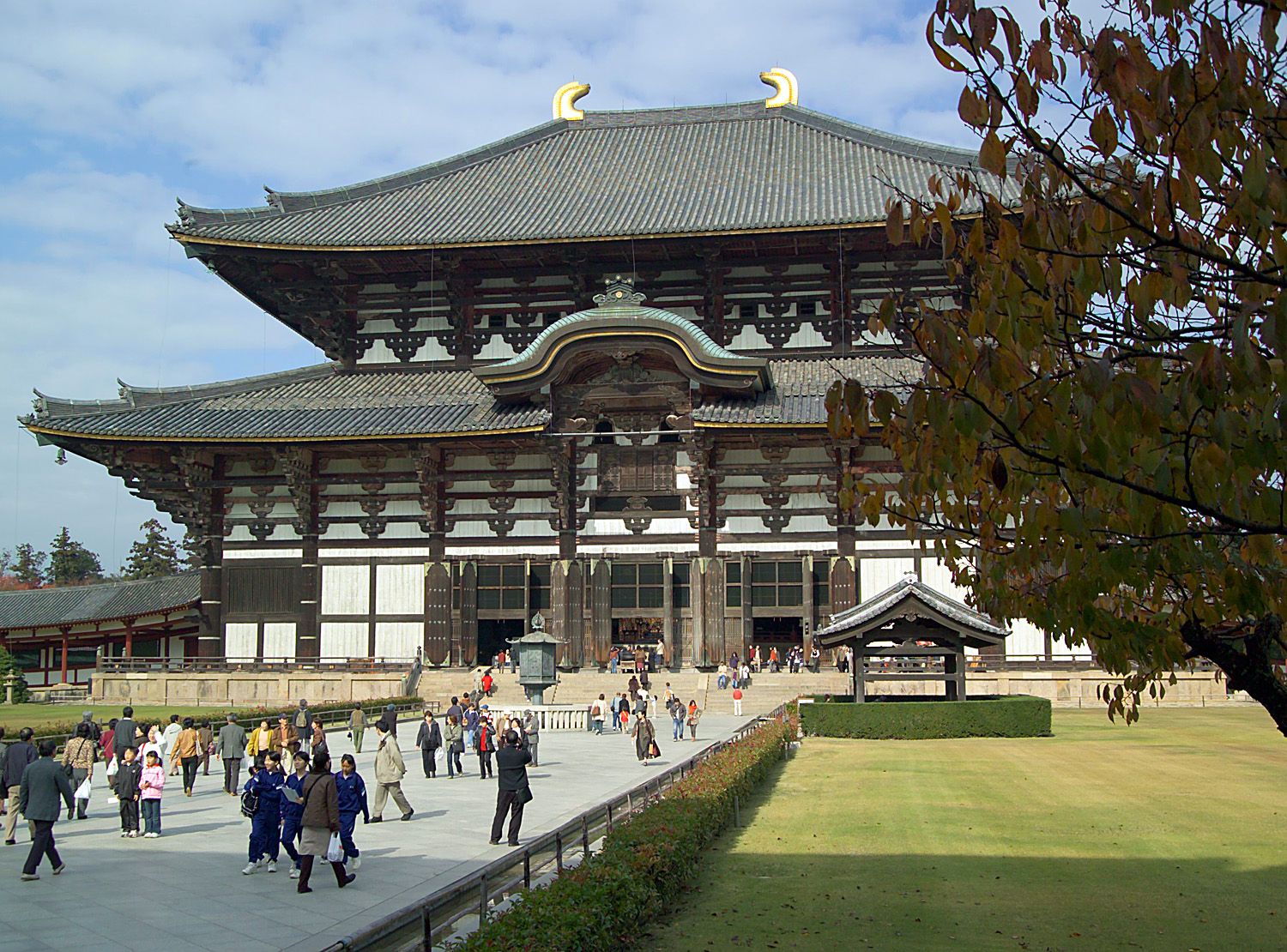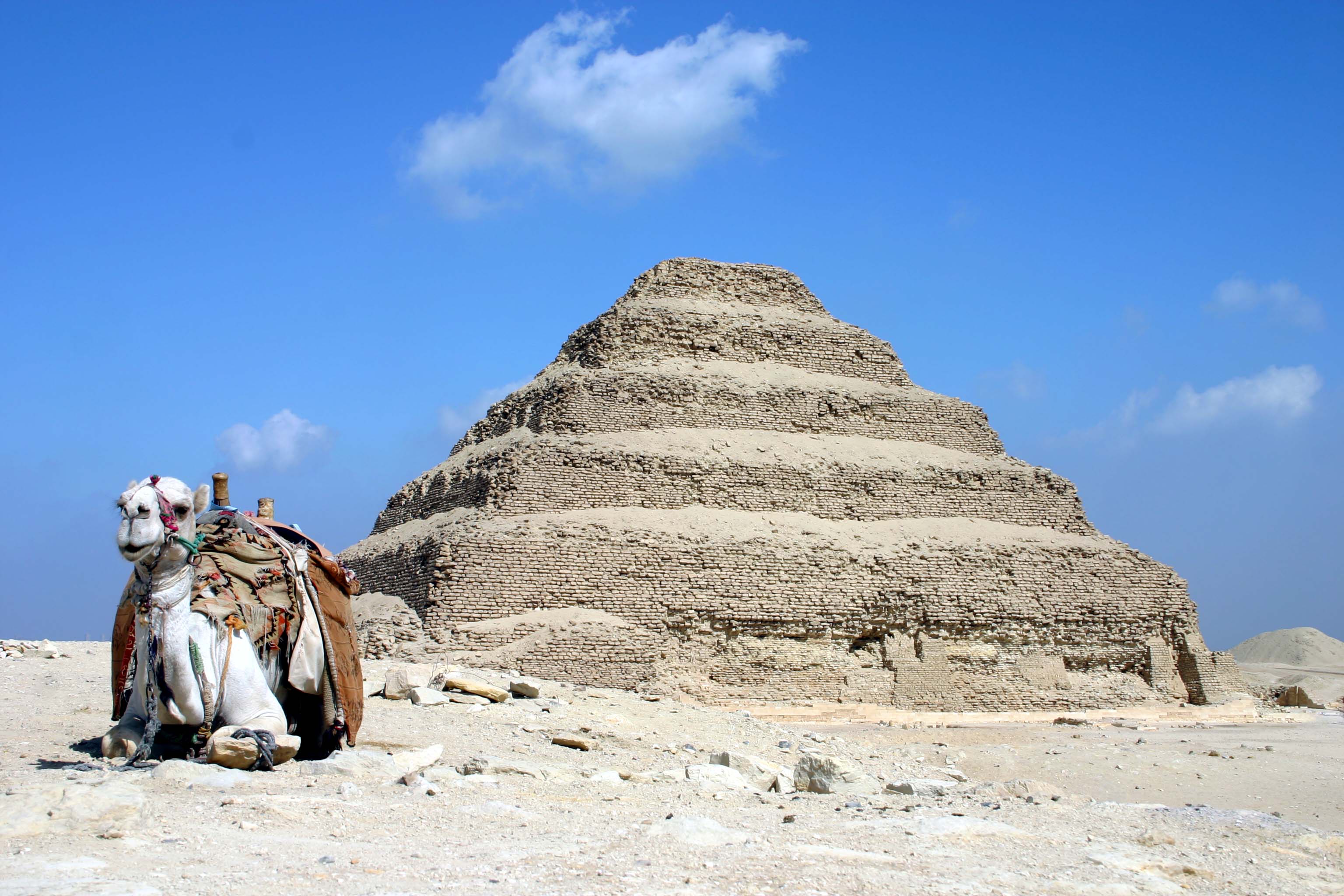|
Shinbashira
The shinbashira (心柱, also 真柱 or 刹/擦 ''satsu'') is a central pillar at the core of a pagoda or similar structure. The shinbashira has long been thought to be the key to the Japanese pagoda's notable earthquake resistance, when newer concrete buildings may collapse. History Hōryū-ji, the world's oldest wooden structure, was found to have in 2001 a shinbashira from a tree felled in 594 CE. Their examples continue in impending centuries in other ''tō'' (塔, pagoda) like the Hokkiji in Nara in 8th century, and Kaijūsenji of Kyoto. Architecture The pillar structure is made out of straight trunks of Japanese cypress (''hinoki''). The pillar runs the entire (but see below) length of the pagoda, and juts out of the top 'layer' of the pagoda, where it supports the finial of the pagoda. The shinbashira is a typical element of Japanese pagodas facing regular earthquakes, but cannot be found in China or Korea, which are not or at least not frequently hit by earthqua ... [...More Info...] [...Related Items...] OR: [Wikipedia] [Google] [Baidu] |
Shinbashira (Tenrikyo)
In the Tenrikyo religion, the Shinbashira (真柱 "central pillar") refers to the "administrative and spiritual leader" of Tenrikyo Church Headquarters. The ''Constitution of Tenrikyo'' defines the position as "the one who governs Tenrikyo."''Constitution of Tenrikyo'', Article 8. While Iburi Izo was the ''Honseki'' (本席, ), the Honseki was considered to be the spiritual leader of Tenrikyo, while the Shinbashira assumed solely administrative leadership. The Shinbashira would go to the Honseki for spiritual advice and consultations, which were later compiled in the ''Osashizu''. After Iburi died in 1907, the Shinbashira assumed both administrative and spiritual leadership of the religion. The fourth and current Shinbashira is Nakayama Zenji (中山善司), who has held the office since April 26, 1998. List of Shinbashiras *Nakayama Shinnosuke (中山眞之亮): Shinbashira from 1881 to 1914 *Nakayama Shōzen (中山正善): Shinbashira from 1915 to 1967 *Nakayama Zenye (中� ... [...More Info...] [...Related Items...] OR: [Wikipedia] [Google] [Baidu] |
Tenrikyo
is a Japanese new religion which is neither strictly monotheistic nor pantheistic, originating from the teachings of a 19th-century woman named Nakayama Miki, known to her followers as "Oyasama". Followers of Tenrikyo believe that God of Origin, God in Truth, known by several names including "Tsukihi," " Tenri-Ō-no-Mikoto" and "Oyagamisama" revealed divine intent through Miki Nakayama as the Shrine of God and to a lesser extent the roles of the Honseki Izo Iburi and other leaders. Tenrikyo's worldly aim is to teach and promote the Joyous Life, which is cultivated through acts of charity and mindfulness called . The primary operations of Tenrikyo today are located at Tenrikyo Church Headquarters, which supports 16,833 locally managed churches in Japan,Japanese Ministry of Education. ''Shuukyou Nenkan, Heisei 14-nen'' (宗教年鑑平成14年). 2002. the construction and maintenance of the and various community-focused organisations. It has 1.75 million followers in Japan a ... [...More Info...] [...Related Items...] OR: [Wikipedia] [Google] [Baidu] |
Nikkō Tōshō-gū
is a Tōshō-gū Shinto shrine located in Nikkō, Tochigi Prefecture, Japan. Together with Futarasan Shrine and Rinnō-ji, it forms the Shrines and Temples of Nikkō UNESCO World Heritage Site, with 42 structures of the shrine included in the nomination. Five of them are designated as National Treasures of Japan, and three more as Important Cultural Properties. History Tōshō-gū is dedicated to Tokugawa Ieyasu, the founder of the Tokugawa shogunate. It was initially built in 1617, during the Edo period, while Ieyasu's son Hidetada was ''shōgun''. It was enlarged during the time of the third shōgun, Iemitsu. Ieyasu is enshrined there, where his remains are also entombed. This shrine was built by Tokugawa retainer Tōdō Takatora. During the Edo period, the Tokugawa shogunate carried out stately processions from Edo to the Nikkō Tōshō-gū along the Nikkō Kaidō. The shrine's annual spring and autumn festivals reenact these occasions, and are known as "processions ... [...More Info...] [...Related Items...] OR: [Wikipedia] [Google] [Baidu] |
Pagoda
A pagoda is a tiered tower with multiple eaves common to Thailand, Cambodia, Nepal, India, China, Japan, Korea, Myanmar, Vietnam, and other parts of Asia. Most pagodas were built to have a religious function, most often Buddhist, but sometimes Taoist or Hindu, and were often located in or near viharas. The pagoda traces its origins to the stupa, while its design was developed in ancient India. Chinese pagodas () are a traditional part of Chinese architecture. In addition to religious use, since ancient times Chinese pagodas have been praised for the spectacular views they offer, and many classical poems attest to the joy of scaling pagodas. The oldest and tallest pagodas were built of wood, but most that survived were built of brick or stone. Some pagodas are solid with no interior. Hollow pagodas have no higher floors or rooms, but the interior often contains an altar or a smaller pagoda, as well as a series of staircases for the visitor to climb to see the view from a ... [...More Info...] [...Related Items...] OR: [Wikipedia] [Google] [Baidu] |
List Of Earthquakes In Japan
This is a list of earthquakes in Japan with either a magnitude greater than or equal to 7.0 or which caused significant damage or casualties. As indicated below, magnitude is measured on the Richter scale (''ML'') or the moment magnitude scale (''Mw''), or the surface wave magnitude scale (''Ms'') for very old earthquakes. The present list is not exhaustive, and furthermore reliable and precise magnitude data is scarce for earthquakes that occurred before the development of modern measuring instruments. History Although there is mention of an earthquake in Yamato in what is now Nara Prefecture on August 23, 416, the first earthquake to be reliably documented took place in Nara prefecture on May 28, 599 during the reign of Empress Suiko, destroying buildings throughout Yamato province.Hammer, Joshua. (2006). ''Yokohama Burning: The Deadly 1923 Earthquake and Fire that Helped Forge the Path to World War II,'' p. 62–63.Ishibashi, K. (2004);Status of historical seismology in Japan ( ... [...More Info...] [...Related Items...] OR: [Wikipedia] [Google] [Baidu] |
Japanese Buddhist Architecture
Examples of Buddhist architecture in Japan Japanese Buddhist architecture is the architecture of Buddhist temples in Japan, consisting of locally developed variants of architectural styles born in China.p=716/ref> After Buddhism arrived from the continent via the Three Kingdoms of Korea in the 6th century, an effort was initially made to reproduce the original buildings as faithfully as possible, but gradually local versions of continental styles were developed both to meet Japanese tastes and to solve problems posed by local weather, which is more rainy and humid than in China. The first Buddhist sects were Nara, Nara, Nara's six ,The six sects were called Sanron-, Jōjitsu-, Hossō-, Kusha-, Ritsu-, and Kegon-shū. followed during the Heian period by Kyoto's Shingon and Tendai. Later, during the Kamakura period, in Kamakura, Kanagawa, Kamakura were born the Jōdo and the native Japanese sect Nichiren-shū. At roughly the same time, Zen Buddhism arrived from China, strongly i ... [...More Info...] [...Related Items...] OR: [Wikipedia] [Google] [Baidu] |
Tokyo Skytree
, also written as Tokyo Sky Tree, is a broadcasting and observation tower, located in Sumida, Tokyo, Japan. It has been the tallest tower in Japan since opening in 2012,Tokyo Sky Tree beats Tokyo Tower, now tallest building in Japan , The Mainichi Daily News, 29 March 2010 and reached its full height of in early 2011, making it the tallest tower in the world, displacing the , and the third talle ... [...More Info...] [...Related Items...] OR: [Wikipedia] [Google] [Baidu] |
Columns And Entablature
A column or pillar in architecture and structural engineering is a structural element that transmits, through compression, the weight of the structure above to other structural elements below. In other words, a column is a compression member. The term ''column'' applies especially to a large round support (the shaft of the column) with a capital and a base or pedestal, which is made of stone, or appearing to be so. A small wooden or metal support is typically called a ''post''. Supports with a rectangular or other non-round section are usually called '' piers''. For the purpose of wind or earthquake engineering, columns may be designed to resist lateral forces. Other compression members are often termed "columns" because of the similar stress conditions. Columns are frequently used to support beams or arches on which the upper parts of walls or ceilings rest. In architecture, "column" refers to such a structural element that also has certain proportional and decorative featur ... [...More Info...] [...Related Items...] OR: [Wikipedia] [Google] [Baidu] |
Architectural Elements
:''The following Outline (list), outline is an overview and topical guide to architecture:'' Architecture – the process and the product of designing and constructing buildings. Architectural works with a certain indefinable combination of design quality and external circumstances may become cultural symbols and / or be considered works of art. What type of thing is architecture? Architecture can be described as all of the following: * Academic discipline – focused study in one academic field or profession. A discipline incorporates expertise, people, projects, communities, challenges, studies, inquiry, and research areas that are strongly associated with the given discipline. * Buildings – buildings and similar structures, the product of architecture, are referred to as architecture. * One of the arts – as an art form, architecture is an outlet of human expression, that is usually influenced by culture and which in turn helps to change culture. Archit ... [...More Info...] [...Related Items...] OR: [Wikipedia] [Google] [Baidu] |
Buddhist Temples In Japan
Buddhist temples or monasteries are (along with Shinto shrines) the most numerous, famous, and important religious buildings in Japan.The term "Shinto shrine" is used in contrast to "Buddhist temple" to mirror the distinction made in Japanese between Shinto and Buddhist religious structures. In Japanese the first are called , the second . The shogunates or leaders of Japan have made it a priority to update and rebuild Buddhist temples since the Azuchi–Momoyama period, Momoyama period (late 16th century). The Japanese language, Japanese word for a Buddhist monastery is (kanji, ''kun'' reading), and the same kanji also has the pronunciation ''ji'' (''on'' reading), so temple names frequently end in ''-dera'' (rendaku, voiced) or ''-ji''. Another ending, , is normally used to refer to minor temples. Examples of temple names that have these suffixes are Kiyomizu-dera, Enryaku-ji and Kōtoku-in. Etymology The Japanese word for a Buddhist temple, , was anciently also written phonetic ... [...More Info...] [...Related Items...] OR: [Wikipedia] [Google] [Baidu] |






